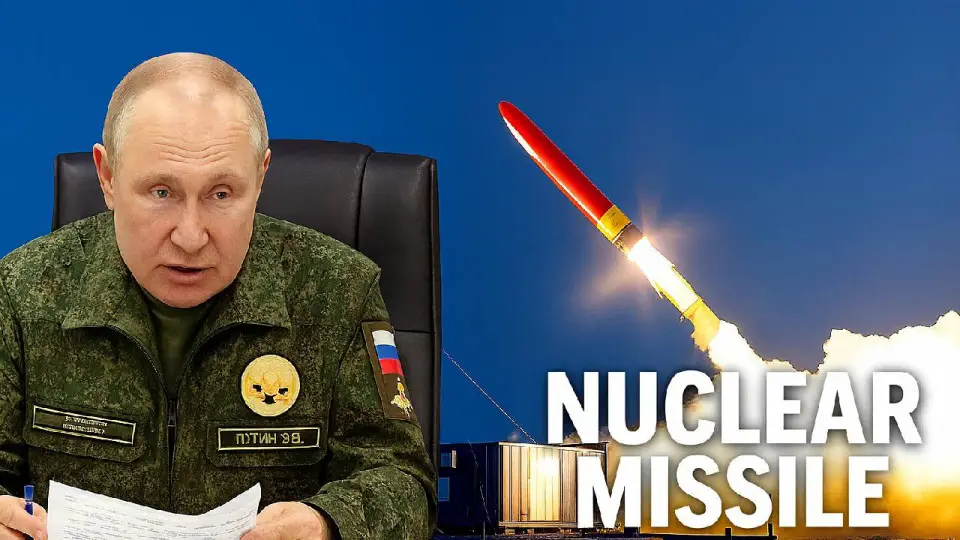
Credit: Ai (Credit: Ai)
International News: Russia announced a public test of the Burevestnik, a nuclear-powered cruise missile that Moscow says can fly for very long distances. Officials claim the weapon stayed airborne for many hours during trials and traveled thousands of kilometers. The Kremlin released footage and statements to show the system working in a controlled test. Russian leaders described it as a breakthrough that gives new reach to their forces. Independent outside verification of full capability is limited and cautious analysts ask for more data.
Many nations are watching closely to confirm the technical claims and the risks involved. The test message was clearly directed at both domestic and foreign audiences.
Burevestnik is described as a cruise missile with a small nuclear reactor on board as its power source. That reactor would heat air and produce thrust, letting the missile fly far beyond normal range limits. Unlike regular missiles that carry fuel and have fixed range limits, this system could in theory fly for days. Such continuous flight would make tracking and interception much harder for current defenses.
Experts warn that the technology also raises big safety and environmental concerns around testing and operation. If true, the weapon changes how militaries think about long-range strike and survivability. But technical hurdles and past accidents mean caution in accepting every claim.
A nuclear-powered engine brings a constant risk of radioactive contamination if a test or crash goes wrong. Past Russian testing reportedly caused a deadly radiation accident in 2019, raising real worries about worker and public safety. Testing in open areas or near coasts could spread contamination over wide regions if something fails. Critics say any benefit of longer flight is outweighed by the permanent hazard of radiation release. Regulators and scientists call for transparency and strict safety measures during any further trials.
International monitoring groups are likely to press for clear information about test sites and environmental impact. Public fear of radioactive accidents can also have political consequences at home and abroad.
Analysts say Russia could aim Burevestnik at hardened or valuable targets that survive initial attacks, to destroy remaining infrastructure or command centers. The idea described by some experts is that a persistent, low-flying weapon could strike multiple times or loiter until a target is found. That raises severe moral and legal questions about attacks on civilian infrastructure during war.
Opponents argue it could be used to create lasting damage to power grids and industry, with widespread human cost. Russia frames the system as a deterrent meant to prevent aggression, not to start conflicts. How it would be deployed in practice remains unclear and would depend on strategy and political choices.
Reports say development has been difficult, with multiple failed trials and at least one deadly accident during testing years ago. Western intelligence and media have questioned success claims and highlighted technical setbacks. Even Moscow admits tests are challenging and that full reliability is not yet proven.
The mix of bold claims and past failures makes many experts sceptical about immediate operational use. Still, the program shows persistent Russian investment in advanced weapons despite risks. Observers say success would shift strategic calculations, but failure could cost lives and credibility.
If Burevestnik proves real and deployable, nations will face hard choices about deterrence, defense, and arms control. Diplomacy, export controls, and new monitoring measures could be pushed to limit spread or dangerous testing. Military planners may accelerate sensors, interceptors, and layered air defenses to track low, long-range threats.
International talks on limits for novel nuclear delivery systems might gain urgency. For now, the dominant need is independent verification, careful scientific review, and clear public information about risks. The debate will shape policy for years as states weigh danger against costly technical responses.
The announcement has stirred global debate but not yet changed facts on the ground: independent proof is needed and accidents remain a warning. Governments should press for transparency and safe testing practices while preparing measured responses. Scientists and diplomats must work together to assess environmental risk and strategic impact. Citizens deserve honest reporting and calm policy, not panic.
The weapon’s promise and peril will be tested in public and behind closed doors. The next steps will matter for global security and how nations handle novel, risky military technologies.













Copyright © 2025 Top Indian News
